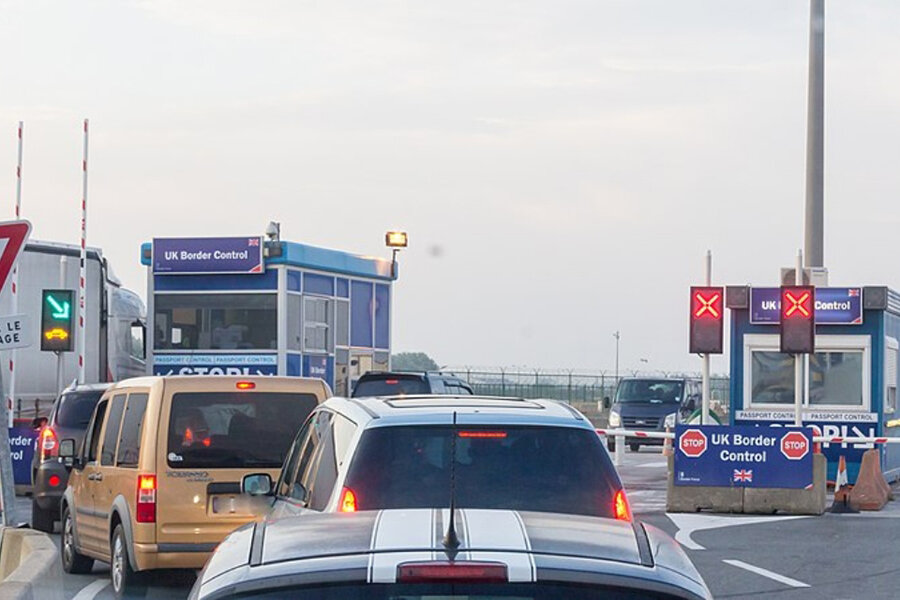читайте также
 The structure of workplace costs in Europe has shifted: Colliers
The structure of workplace costs in Europe has shifted: Colliers
 How Terrorism Is Reshaping Middle East Tourism in 2025: Risk, Resilience and Shifting Demand
How Terrorism Is Reshaping Middle East Tourism in 2025: Risk, Resilience and Shifting Demand
 Rental Market in Paris: Rate Dynamics, Occupancy, and Yields
Rental Market in Paris: Rate Dynamics, Occupancy, and Yields
 DHS Travel Ban Shock: How a Proposed Expansion to 32 Countries Could Disrupt Airlines, Tourism and U.S. Hospitality
DHS Travel Ban Shock: How a Proposed Expansion to 32 Countries Could Disrupt Airlines, Tourism and U.S. Hospitality
 Travel Surge 2025: How Lufthansa, Iberia and Hyatt Ignited Record Demand for Spain, Italy and the U.S.
Travel Surge 2025: How Lufthansa, Iberia and Hyatt Ignited Record Demand for Spain, Italy and the U.S.
 Hyatt Expands Boldly Across Portugal: Four New Hotels Set to Redefine Hospitality in 2025–2026
Hyatt Expands Boldly Across Portugal: Four New Hotels Set to Redefine Hospitality in 2025–2026
EU's Entry/Exit System (EES) Set to Launch in November 2025

The Electronic Entry/Exit System (EES) has been in development for several years, with multiple delays postponing its launch. After missing the scheduled fall 2024 deadline, no new date was initially provided. However, Doug Bannister, CEO of the Port of Dover, recently announced via KentOnline that the EES is now expected to go live no earlier than November 2025.
The ETIAS portal recalls that the system was originally slated for the first half of 2022, then postponed to May 2023, later to November 10, 2024, before being delayed once again. Testing revealed that several EU member states, including Germany, France, and the Netherlands, were not yet fully prepared to integrate their border control systems with the new database. These three countries alone handle approximately 40% of the affected passenger traffic, making their readiness crucial.
Additionally, border authorities raised concerns about longer queues and delays, especially during peak tourist seasons. In early 2024, the European Scrutiny Committee of the UK House of Commons was informed that EES checks could result in delays of up to 14 hours due to the time required for processing travelers.
As a result, the European Commission initially postponed the rollout without setting a new date. The most recent decision is to implement the system in phases over six months.
How the EES Will Work
The Entry/Exit System (EES) will apply to all non-EU travelers entering the Schengen Area for short stays, regardless of whether they require a visa. The system will be deployed at airports, seaports, land borders, and railway crossings.
Once implemented, passport stamping will be replaced by electronic registration. The system will collect and store biometric data (facial images and fingerprints), along with entry and exit records, to identify travelers who overstay their permitted time in the Schengen Area. Additionally, EES will enable better information sharing among Schengen member states.
Upon first entry, travelers will need to provide a photo, fingerprints, and passport details, which will be stored in a central database for three years. Subsequent border crossings will become faster and more automated.
Experts emphasize that even a phased implementation will require regulatory changes. The initial rollout will focus on key border checkpoints, such as major airports and high-traffic land crossings, before extending to all Schengen border points. This approach aims to reduce infrastructure strain and minimize inconvenience for travelers.
ETIAS Delayed Again
The postponement of EES also delays the European Travel Information and Authorization System (ETIAS). The visa-waiver program, initially planned for early 2025, has already faced multiple postponements. ETIAS is expected to affect approximately 1.4 billion travelers from over 60 visa-exempt countries.
ETIAS will apply to short stays of up to 90 days within a six-month period. Travelers will need to submit an online application and pay a €7 fee via the official ETIAS website or mobile app. Most applications will be processed within minutes, but some may take up to four days, and in cases requiring additional information or an interview, processing could take between two weeks and 30 days. Applicants can appeal if denied.
An ETIAS travel authorization will be linked to the traveler's passport and will remain valid for three years or until the passport expires, whichever comes first. If a traveler obtains a new passport, they must reapply for ETIAS approval. The system is now expected to launch six months after EES becomes operational.
Challenges and Future Implications
These ongoing delays raise concerns about the EU's ability to swiftly adapt to evolving security and immigration challenges. As the bloc grapples with irregular migration, border security, and geopolitical risks, the slow progress in implementing EES may influence future policies and priorities in immigration management.
While the EU addresses technical and logistical hurdles, travelers, border officers, and policymakers face ongoing uncertainty. When fully deployed, EES will fundamentally change the Schengen entry and exit process.
The coming months will be critical as the EU reassesses its border control strategy. Those involved in travel and immigration matters should remain informed and prepared for the eventual transition to the new system.





